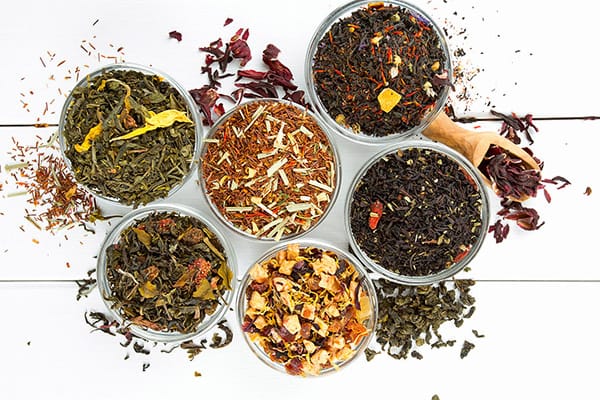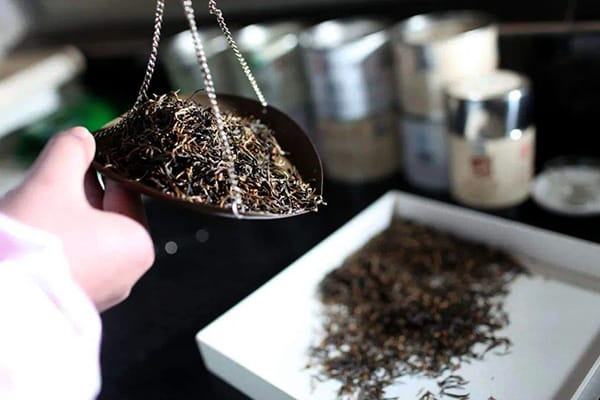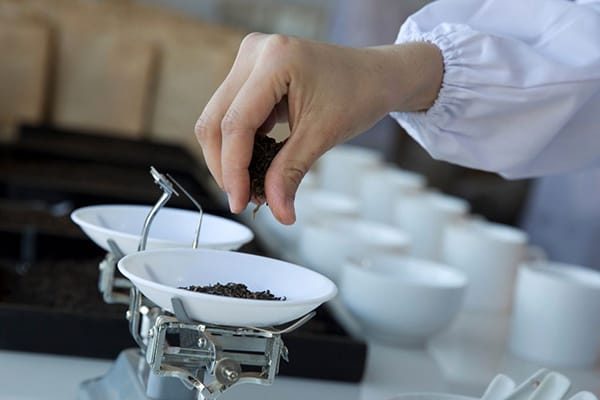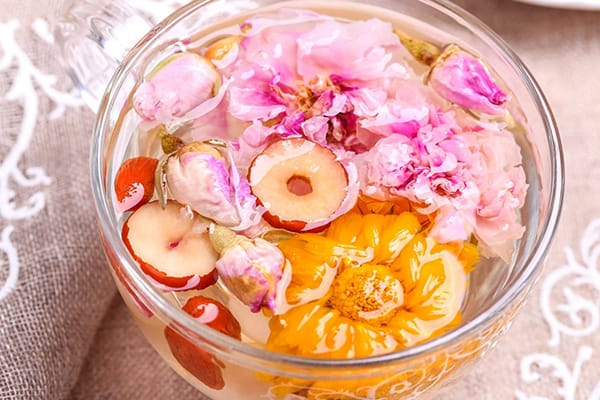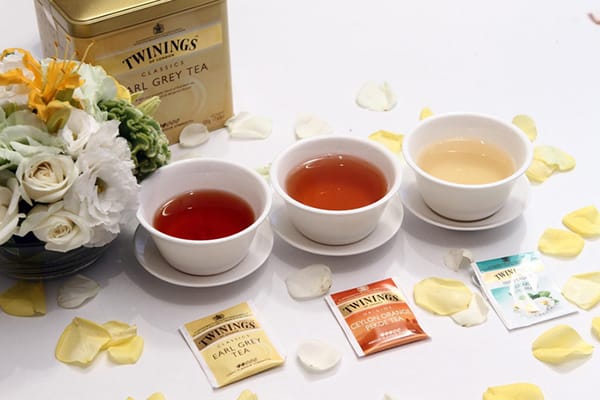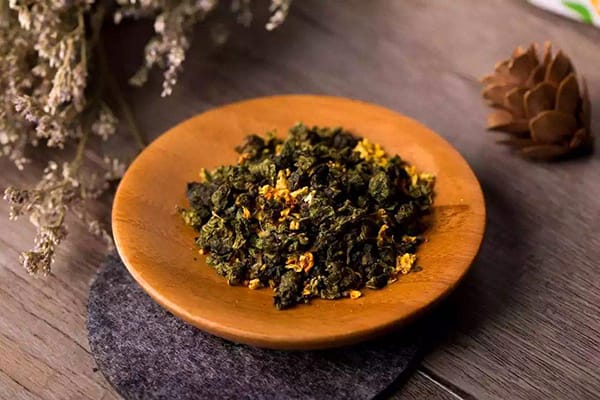Last Updated on 03/02/2022 by Desmond
Blended Tea and Flavoured Tea are the common classifications when buying some teas online. Do you know what they actually mean and the differences between pure teas?
CONTENT
What Is Blended Tea
First, let’s see what blended tea is.
Blended teas refer to the tea made from the leaves blended from different gardens, grades, species, and harvest batches. Generally speaking, unless you pre-order the special batch tea(most of the time, it’s rough tea) from the farmers, then almost all the leaves you buy from the market are blended.
Why blend the different leaves? It’s simple. Every tree grows different quality leaves, even they are in the same garden. Because various factors like the sunshine angle and cultivate position influence that. To process the leaves from each tree separately is almost impossible. (ever the Da Hong Pao mother tree had been treated in this way.)
Typically, tea farmers will process the leaves preliminary after picking, making them into rough tea, then wait for tea merchants to purchase. Tea merchants purchase leaves from every garden, then process them further. Leaves will be selected, graded, then blended together again according to a standard. In this way, the final products get a unified quality and flavor.
Besides, blended herbal teas are also the usual ones. Each herb has a unique flavor and benefits. A blended brewing provides a better experience and health benefits.
How Are They Be Blended
Tea merchants are not just blended all the leaves they purchased simply then sold. Almost every tea brand hires a senior tea masters team. They set a standard according to the leaves’ sources and characters, and this will be executed strictly. Every brand has its own unique recipes, and you can know its style from its signature item.
Typically, leaves blending are based on the following 5 criteria.
Grade
Leaves’ grades influence the price most. Leaves are typically graded according to the position they picked. The tender buds have the highest quality, then the first leaf, the second, and the third. Tea masters blend these different quality leaves in proportion, making out the final products with different grades and prices. A more common example is the International Tea Leaf Grading Standard. It regulated the blended black tea grade in detail.
Species
There are various types of Camellia Sinensis cultivated in a scale tea garden. Likewise, their leaves’ quality, size, and flavor also have a large gap. Some aged tea plants’ leaves taste much stronger than the youth.
Producing Area
Big Brands purchase and blend the source leaves from gardens in every country(generally in India, Sir Lanka, and China) because of the enormous requirement, especially for the black tea products. Except for unifying the flavor, tea masters also manage each leaf’s size during blending. Leaves from different producing areas create better flavor after blending.
Harvest Season
It’s just the same situation as the different producing area purchasing. Due to there being mass leaves that require processing, tea merchants had to blend leaves that harvest in different seasons together to balance the final products’ quality and flavor. However, there are also products made from leaves that harvest from the special season, such as spring flush tea, summer flush tea, Akibancha, etc.
Harvest Year
Typically, there are two situations that leaves be blended according to their harvest year.
Pu-erh tea needs to be piled and aged during processing, and it takes a long time. So most ripe Pu-erh tea cakes are pressed from the leaves harvest in different years.
A more common situation is about those big brands. They won’t process all the leaves that harvest in a year but retain a certain part of them for blending with the new leaves next year. This is for letting the final products can keep a similar flavor all the time; at least, it’s hard to note by customers.
Blending Is Inevitable
From those mentioned above, we can see that the biggest purpose of leaves-blending is to unify and maintain teas’ flavor and quality. It can also create a better taste by blending in different combinations.
However, many people thought that the teas they bought were not pure enough. They thought it was a treat and regarded the tea as low-quality subconsciously. Actually, the quality and flavor of most so-called pure tea(i.e., the rough tea) are far away from blended teas.
The most important is that the tea trees in the modern gardens just can produce a few hundred grams of leaves in a year, except for those aged, large tea trees in Yunnan. If you are nitpicking, leaves from different trees are also mean blended, isn’t it? So, leaves blending is inevitable.
Blended Herbal Teas
To blend herbal teas is for another reason.
There are more types of herbal teas than true teas(leaves contain caffeine.) Their flavor is various and has a significant difference in the health benefits. For example, some people don’t like the sour taste of hawthorn, then balancing it with the sweetness of chrysanthemum seems a good idea.
There are also many folk treatments about herb use all over the world. For example, Chinese Traditional Medicine(CTM) thought that every herb could be classified into cold, neutral, and heat, also the human blood. So CTM herbal tea recipes are often blended from herbs with different properties. This makes the final infusion closer neutral, bringing fewer side effects to health.
Besides, multiple herbs bloom together in water look more beautiful. This is another reason blended herbal teas are popular in the youth market.
Classic Blended Teas
Excellent brands hire professional tea masters teams for the leaves blending job, for creating unique styles. English breakfast tea is a famous blended tea; almost all brands produce it. Although each brand has its fantastic recipe, the common ground is the intense flavor, and it matches milk much. A similar product is English afternoon tea, but it tastes weaker.
Among the Chinese rock tea lover groups, there is also a custom that blends the leaves from two different Camellia Sinensis(Rou Gui and Shui Xian). Rou Gui tea tastes strong, and Shui Xian tea has a delicate and lasts long aroma. Blending them together can create a brand new charming flavor.
What Is Flavoured Tea
Flavoured teas also have a long history. Dry leaves are easy absorbing the smell from other stuff. Tea masters flavored and create awesome taste with this leaves’ feature.
The most famous flavoured tea is jasmine tea. It takes green tea as the base, then scented with jasmine flowers. In the past, this type was also called scented tea. By technological advances, now tea masters use not only herbs but also essential oil, fruits to scent the leaves.
Common Flavoured Methods
Tea masters typically use the 3 following methods to flavor the leaves.
Scented
Scenting is an ancient method for flavored tea leaves. Let’s take jasmine tea as an example.
Tea masters pile the green tea leaves and dry jasmine flowers layer by layer together, making the leaves absorb the robust aroma. The leaves need to be re-roasting again because they also absorb the moisture from the flowers. This processing typically requires to do 7 times. Finally, tea masters remove all the petals and just remain the leaves. (sometimes also remain few petals)
Related Reading: Jasmine Tea Isn’t Caffeine Free, But Worth A Try Due To 8 Reasons
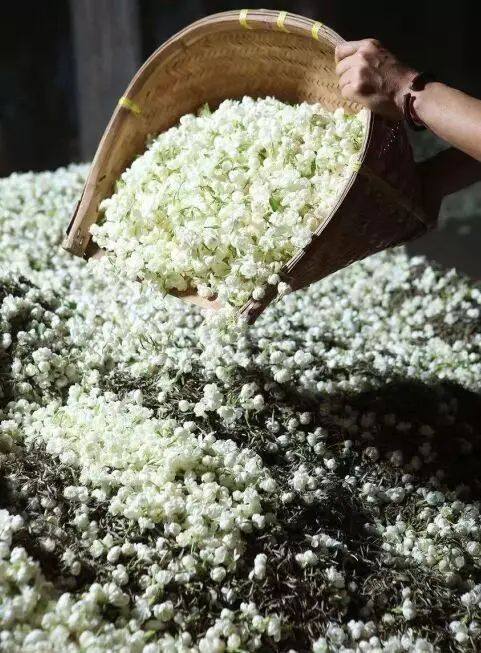
Smoked
Many teas have a unique smoky aroma, famous ones like Lapsang Souchong, Weishan Maojian, and the Rock Teas. Tea masters roast the leaves with special fuel(such as massoniana wood and pine) to let them get a smoky aroma. Some tea lovers also re-roast the Strong Flavor Tieguanyin at a regular period to make the smoky flavor deeper.
Flavoring Agent
Flavoring the leaves with flavoring agents is a typical modern method. There are 4 common types:
- Natural. Scenting the leaves with some dry herbs or fruits. Different from the scented jasmine green tea, these ingredients won’t be removed in the final product but brew with the leaves together.
- Natural Identical. Flavoring the leaves with the ingredients extracted from the natural food, such as essential oil and spice.
- Artificial. Flavoring the leaves with the flavoring agents which are not naturally existent, such as various types of artificial essence.
- Natural & Artificial Combination. Those naturally flavoured teas are hard to reach a unitive quality and flavor. Thus, manufacturers will use artificial flavoring agents at the same time.
The Advantages of Flavoured Tea
Many traditional tea lovers are a little despise flavoured teas. They thought it couldn’t better experience the tea’s natural flavor. But most youths prefer the various newfangled tastes much. Tea brands keep R&D products with kinds of flavors actively to occupy more market share.
Except for the rich flavors, the most significant advantage of flavoured tea is it has a low-quality requirement to the source leaves. After all, the natural flavor of leaves can’t embody much after flavored. And those relative-low quality leaves, such as summer flush teas, their strong flavor match the flavoring agents better. And it also makes flavoured teas got a more favorable price than the traditional loose leaves.
Classic Flavoured Teas
Earl Grey Tea
The famous Earl Grey is also a flavoured tea. It originated Chinese black tea(some said it was Keemun) flavored with bergamot oil. It made the tea-drinking custom became popular in western. Now many big brands are producing Earl Grey tea. Even though the recipes are different, the source leaves are primary from India and Sri Lanka.
Orange Pu-erh Tea
We’ve mentioned jasmine tea and Lapsang Souchong above. There is also a famous natural flavoured Chinese traditional tea called Orange Pu-erh. This type of tea is made by aging the ripe Pu-erh leaves in a dry, empty orange. Leaves during aging absorbed the fresh orange aroma. When preparing, brewing them together can make the infusion become milder and more smooth.
Flavoured Oolong
Roasted Oolong teas are very fittable for flavoring. Osmanthus Oolong, grapefruit Oolong, and peach Oolong are very popular. They are flavored with either natural identicals or artificial flavoring agents.
